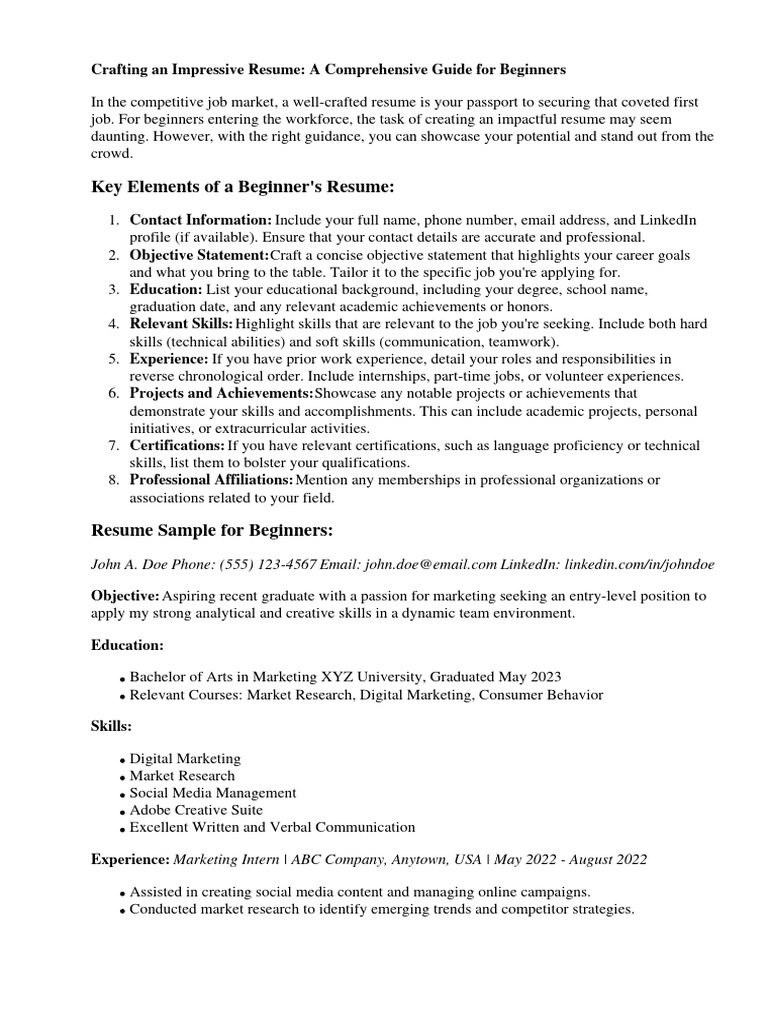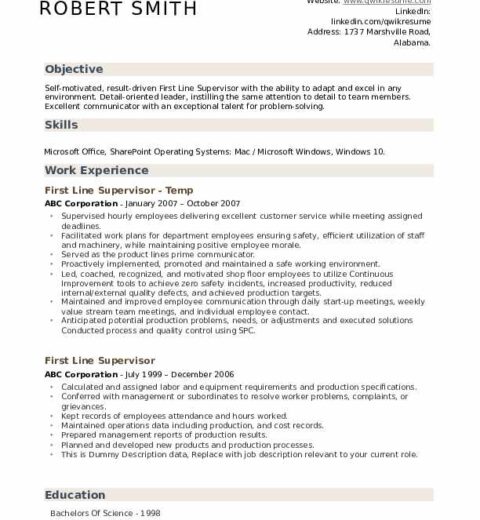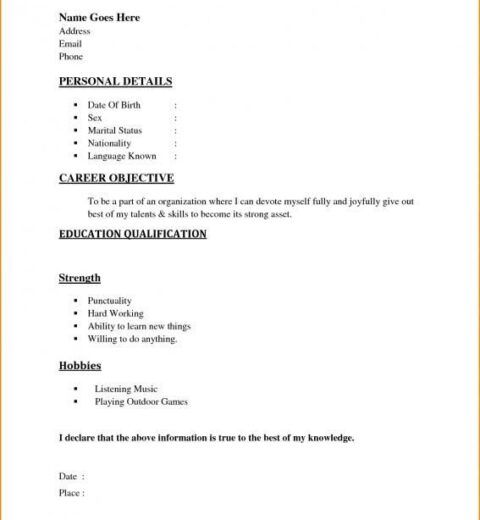Creating a resume is akin to crafting a personal narrative that encapsulates your professional journey, achievements, and aspirations. Much like a finely-tuned instrument, each component of a resume must work in harmony to present an eloquent reflection of your competencies and potential to prospective employers. This guide serves as a comprehensive resource for beginners embarking on the endeavor of resume construction, equipping you with the foundational knowledge and tools necessary to devise a compelling document.
Understanding the Resume Anatomy
A resume is not merely a list of jobs held or duties performed. It is a carefully curated document, composed of various sections that collectively narrate your professional chronicle. The primary sections of a resume typically include the following:
- Contact Information: At the top of your resume, your name should stand out, followed by your phone number, email address, and LinkedIn profile link, if applicable. Ensure this information is accurate, enabling potential employers to reach you effortlessly.
- Objective or Summary Statement: This brief section encapsulates your career goals and what you seek in a position, while also highlighting the unique value you bring to a potential employer. It sets the tone for the rest of the resume.
- Education: Detail your academic qualifications, including degrees obtained, institutions attended, and graduation dates. Be sure to mention any honors or relevant coursework that showcases your specialized knowledge.
- Experience: This is arguably the heart of your resume. Detail your prior employment, including job titles, companies, locations, and dates of employment. Describe your contributions using action verbs and quantifiable achievements to provide context and illustrate your impact.
- Skills: List relevant skills that complement your experience and education. These could include both hard skills, such as proficiency in software applications, and soft skills, like excellent communication abilities.
- Certifications and Additional Sections: If applicable, include any professional certifications, volunteer work, languages spoken, or special projects that enhance your profile. This can help paint a comprehensive picture of you as a candidate.
The Craft of Tailoring Your Resume
Just as a tailor meticulously adjusts a suit to ensure it fits perfectly on its wearer, you must customize your resume for each position you apply for. This process involves dissecting the job description to identify keywords and requirements that resonate with your experience. By incorporating relevant phrases and skills into your resume, you enhance its appeal and increase the likelihood of passing Applicant Tracking Systems (ATS) used by many employers to screen candidates.
This tailored approach not only demonstrates your genuine interest in the position but also illustrates how your unique qualifications align with the needs of the organization. Remember, your resume should not be a generic list; rather, it should underscore your suitability for the specific role.
Formatting: A Visual Symphony
The formatting of your resume plays a pivotal role in its effectiveness. An aesthetically pleasing layout can captivate a hiring manager’s attention, much like a well-composed symphony engages its audience. Here are some essential formatting tips:
- Font Style and Size: Opt for a professional font such as Arial, Calibri, or Times New Roman in a readable size (10-12 points). Ensure consistency throughout the document.
- Bullet Points: Use bullet points to present information succinctly. This allows potential employers to glean essential information quickly, enhancing readability.
- White Space: Incorporate ample white space to prevent the resume from appearing cluttered. This also facilitates easy reading and allows key information to stand out.
- Consistent Formatting: Ensure that headings, dates, and bullet points maintain a uniform style, which helps in presenting a coherent visual flow.
The Importance of Action Verbs
The language used in your resume can significantly impact the reader’s perception of your capabilities. Utilizing potent action verbs—such as “executed,” “spearheaded,” and “facilitated”—invokes a sense of initiative and accomplishment. These verbs bring your achievements to life, painting a vivid picture of your contributions and allowing your experiences to resonate with the reader. Instead of merely stating tasks, these verbs emphasize your proactive engagement and leadership.
Proofreading: The Art of Precision
The difference between a convincing resume and a mediocre one often lies in the minutiae. Meticulous proofreading is essential to identify typographical errors, grammatical missteps, or inconsistencies that could undermine your professionalism. A single misplaced comma or misspelled word can leave an unfavorable impression, suggesting a lack of attention to detail. Consider having someone else review your resume, as a fresh set of eyes can catch errors that you may overlook.
Conclusion: The Final Flourish
In the grand odyssey of your professional career, the resume is your calling card—a meticulously crafted narrative that speaks to your journey, achievements, and aspirations. By understanding its components, tailoring it to the roles you desire, and presenting it with an eye for detail, you position yourself as a compelling candidate in a competitive job market. Your resume should not only tell your story but also invite the employer to envision you as a critical player in their organization. As you embark on creating or refining your resume, remember that it is not merely a document; it is a gateway to your professional future.




